The Flock | Interview | Jerry Smith
The Flock was a Chicago-based jazz rock band that released two albums on Columbia Records. Despite not achieving the commercial success of other jazz oriented bands of the era, their two albums ‘The Flock’ and ‘Dinosaur Swamps’ are some of the most unique recordings mixing a variety of styles.
The Flock originally started as a more garage rock oriented band and had three early singles on Destination Records and one on USA Records, local Chicago labels, recorded between 1966 and 1968. The members at the time of their 1969 album recording were Fred Glickstein (guitar, lead vocals), Jerry Goodman (violin), Jerry Smith (bass), Ron Karpman (drums), Rick Canoff (saxophone), Tom (T.S. Henry) Tom Webb (saxophone) and Frank Posa (trumpet). Their debut album was highly influenced by the Miles Davis’ ‘Bitches Brew’ album in which Tom Webb participated, but whose performance was not recorded. ‘The Flock’ was produced by John McClure, better known for his work with classical and jazz artists, with liner notes written from the audience at Whisky a Go Go by John Mayall, on July 9, 1969. The band went back into the studio and recorded a second album entitled ‘Dinosaur Swamps,’ with Jon Gerber replacing Tom Webb. They began work on a third studio album, provisionally titled ‘Flock Rock,’ but rumours at the time had Columbia Records’ Clive Davis raiding The Flock and recruiting Jerry Goodman for the Mahavishnu Orchestra project. The Flock reunited briefly in 1975 for an album, ‘Inside Out,’ and in 2004 a CD was released of a 1973 live concert called, ‘Live in Europe,’ which features Michael Zydowsky on violin in place of Goodman and includes original members Fred Glickstein, Jerry Smith, and Ron Karpman.
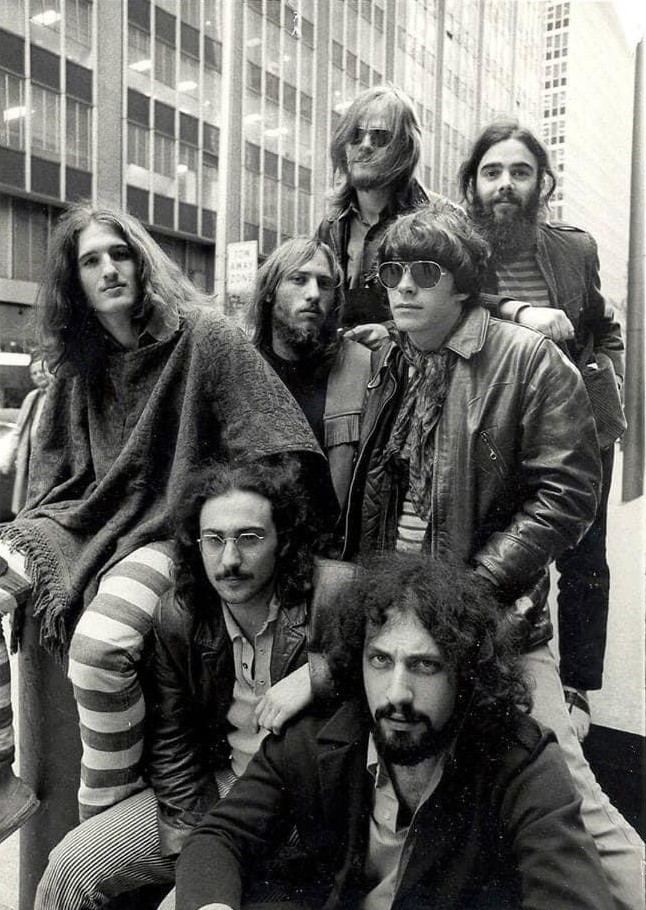
“John Mayall said The Floc were the best band he heard at that time”
Thank you so much for taking your time and effort. How did you first get interested in bass and do you recall what was the first bass you got?
Jerry Smith: I was actually a guitar player and folk singer as a teenager. When the “British Invasion” started with The Beatles and The Rolling Stones, et cetera I became more interested in this new type of music. I put a group together for a high school talent show when I was 17 years-old. We had three guitar players and a drummer – no bassist. Someone who knew the band, The Exclusives, in Chicago, knew they were looking for a singer who played bass to compliment Fred Glickstein, their lead guitarist. The two main members of that group, Rick Canoff and Fred Glickstein came to the talent show and asked me if I were interested in coming to a rehearsal. I told them I would, but I don’t play bass. “Come anyhow!” I did and brought my guitar with me. Fred and Rick Mann were great guitar players and I told them I would learn the bass. I listened to all the music of the day and learned bass parts straight off the records which helped me understand the instrument better. The Exclusives became The Flock a short time after. Also, my drummer in the high school talent show also joined the group when I did. That was Ron Karpman. I had many basses back then, but I believe my first bass was a Gibson EB-3.
You grew up in the Chicago area? Would you like to discuss some of the very early days growing up in your city?
I was born and raised in Chicago until I was about 11 years-old and we moved to Niles, a northwest suburb of Chicago. During my teen years as a member of The Flock, we were part of an emerging group of young talented musicians performing at Teen Clubs that were sprouting up around the city. Groups like The Buckinghams, The Ides of March, For Days and a Night, The American Breed, The Cryan’ Shames, and many others. We all performed the local circuit for a few years. We were a 5-piece Pop band and then added two more horn players, Tom Webb and Frank Posa.
Was there a certain moment in your life when you knew that you wanted to become a musician?
Yes, it wasn’t until I became a member of The Flock and particularly when Jerry Goodman joined our band. We became involved with the Avant Garde Fusion type of music starting around 1968.
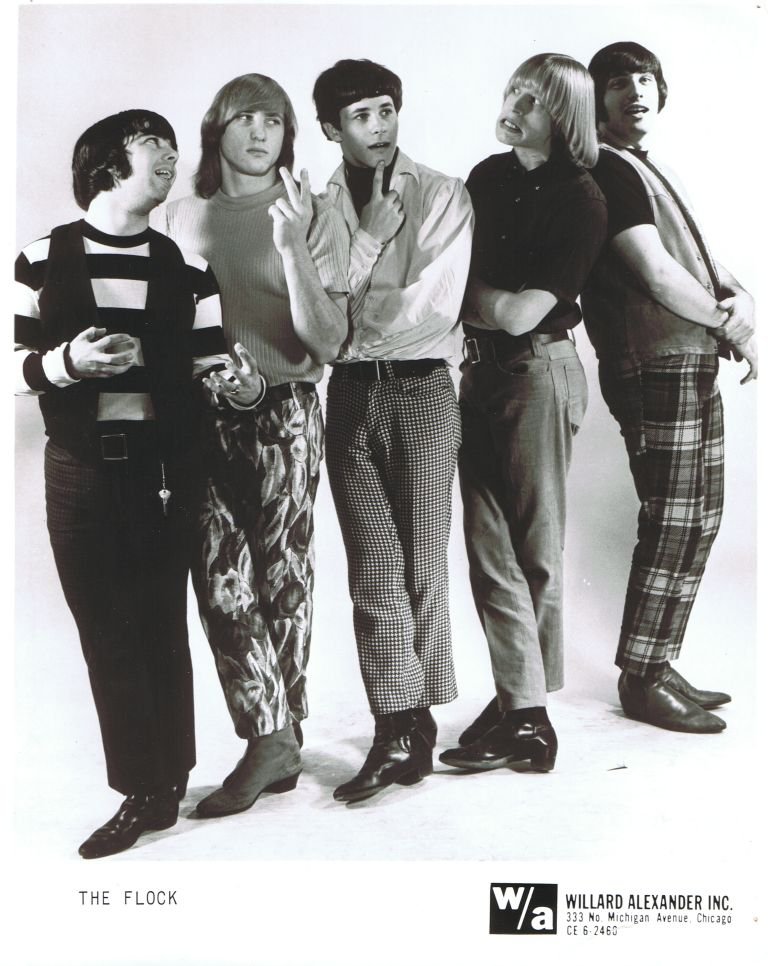
How did you first get involved with music?
I was 10 years-old when I started playing guitar. I was not a great player – I simply enjoyed playing chords and singing to music of the day.
I started with The Flock and we disbanded at the end of 1970. I joined up with a Chicago group, For Days and a Night. We changed the name to Aura and released an album on Mercury Records in 1971 which I co-produced. I actually met my wife, Mary Lou, at the record company. She was the executive secretary to the president of the company, Irwin Steinberg. Fred Glickstein, Ron Karpman and I reformed The Flock in 1973 and went on to tour Europe. We also released a Mercury Records album in 1975 titled, ‘Inside Out’. Also during this time, I would work at various recording studios doing A and R work producing demo tapes, et cetera.
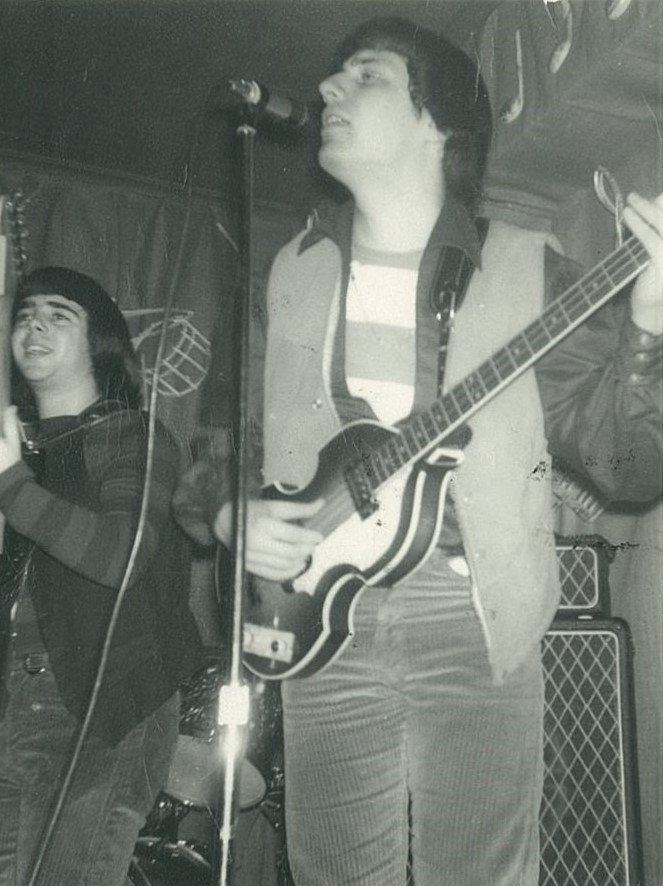
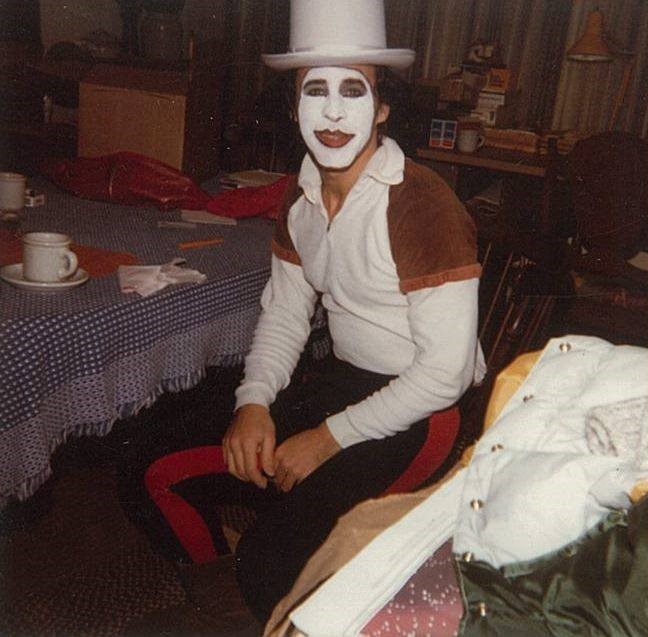
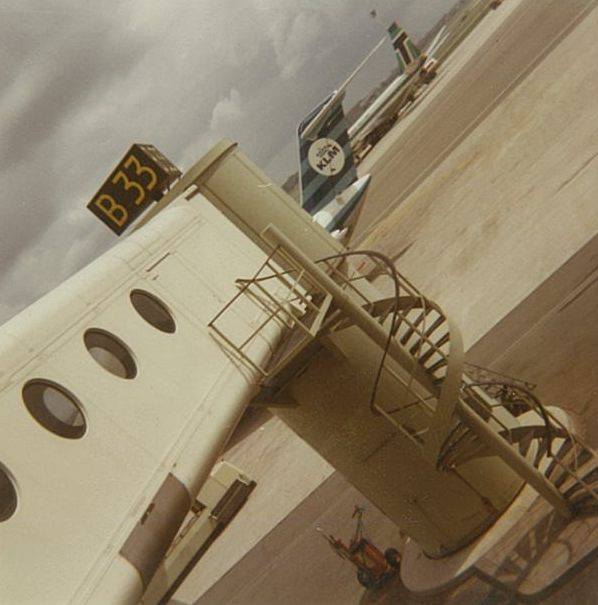
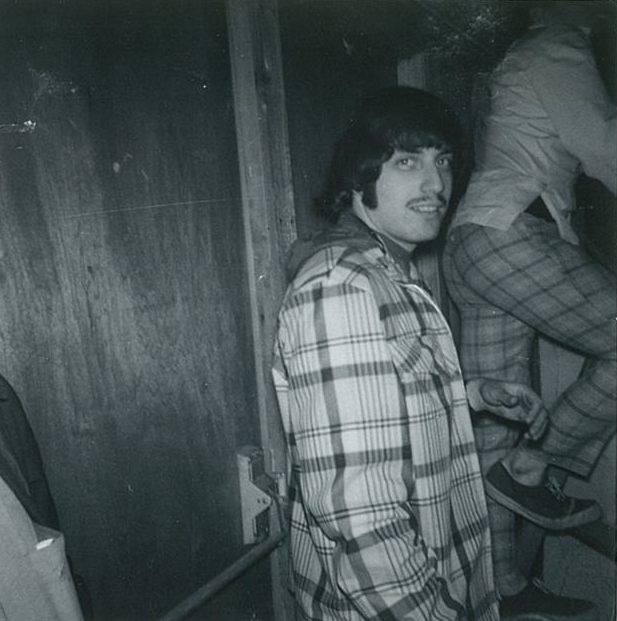
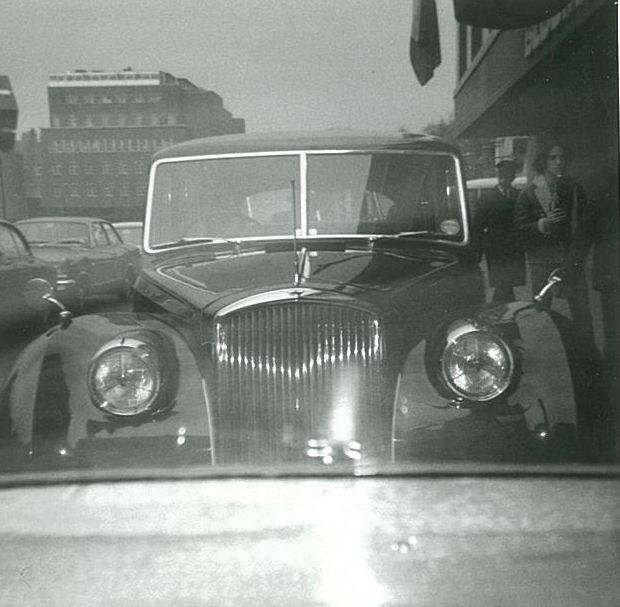
“We started experimenting with Jerry Goodman on violin in 1968”
Can you elaborate on the formation of The Flock and what was the overall vision of the band? When did you officially get together?
As I mentioned earlier, we were in high school when we formed the group in 1965. A lot was going on socially and musically back then. We had Fred Glickstein and Rick Mann on guitar. Fred also played keyboards as well as trumpet and he wrote a lot of our material. At least the initial ideas came from him. Again, it wasn’t until we got Jerry Goodman in 1968 that the direction changed for us – we actually did not see this coming. Jerry replaced Rick Mann on guitar. We then started experimenting with Jerry on violin who was classically trained. He was a bit younger than us at that time. I believe he was 18 years-old.
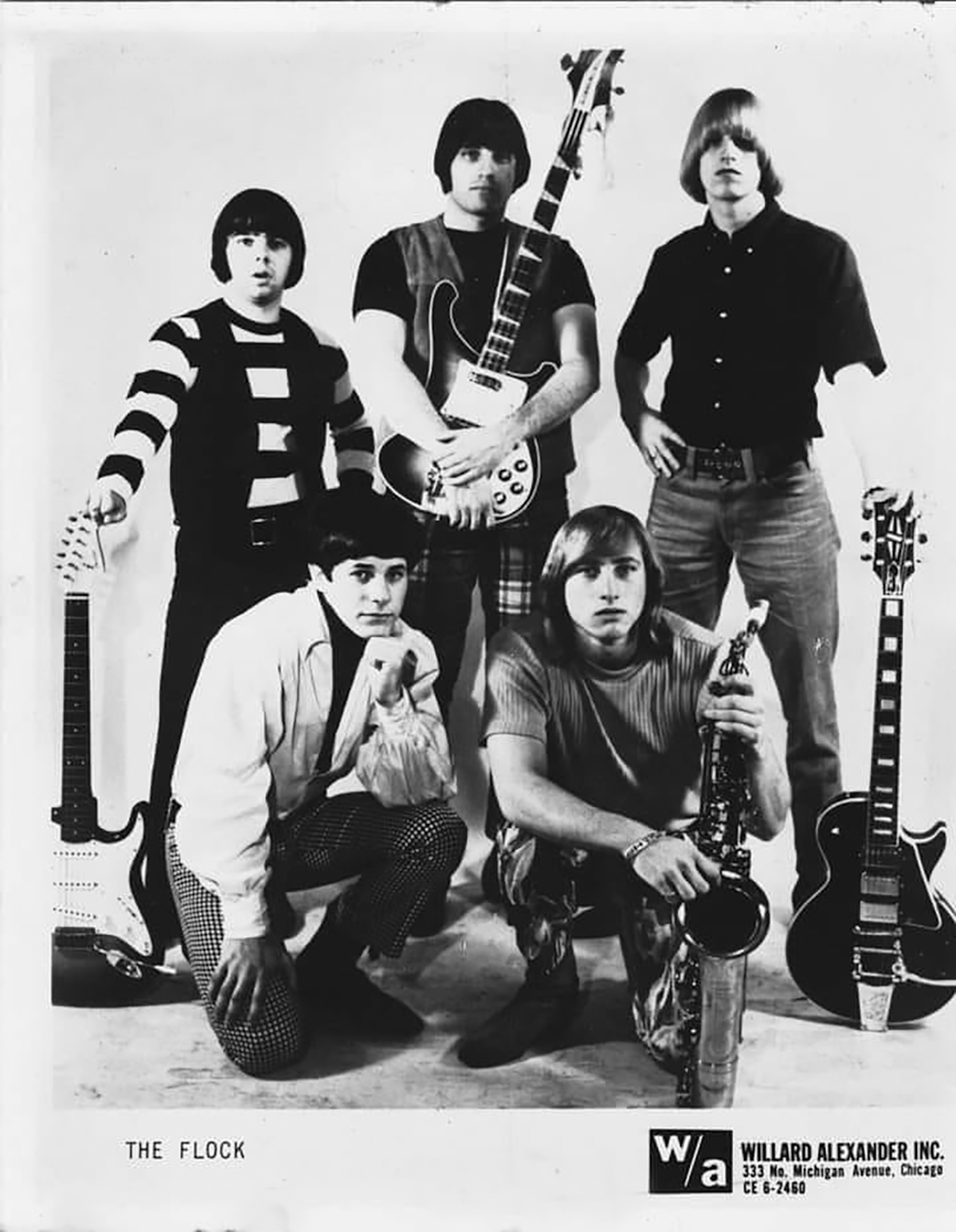
The band released several singles for Destination Records. Would love it if you could tell us about those early compositions.
We had produced several singles for USA Destination Records. They also managed us for a while. The first released recording was ‘Can’t You See’.
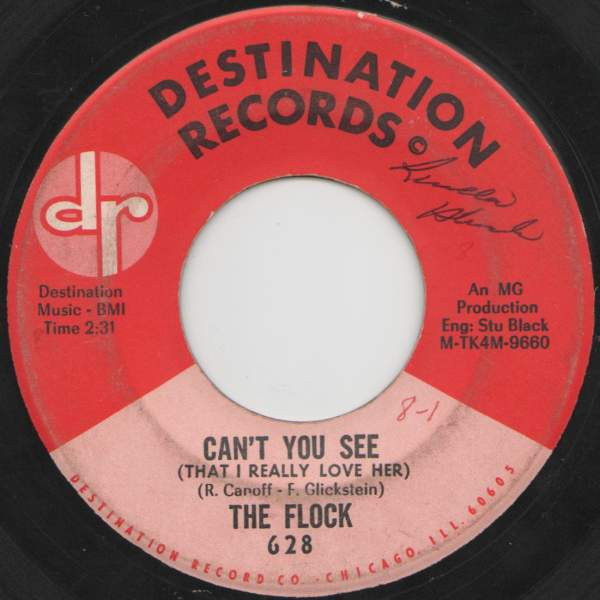
I sang lead on that recording. The next was ‘Are You The Kind’ which Fred Glickstein and I sang as a duo. The third recording was written by Robert Stanley and titled ‘Take Me Back’. It had really good success and went to number 3 on the charts. There were also several others, but Jerry Goodman was now in the band and we changed direction to our new style of progressive music that was less commercial.
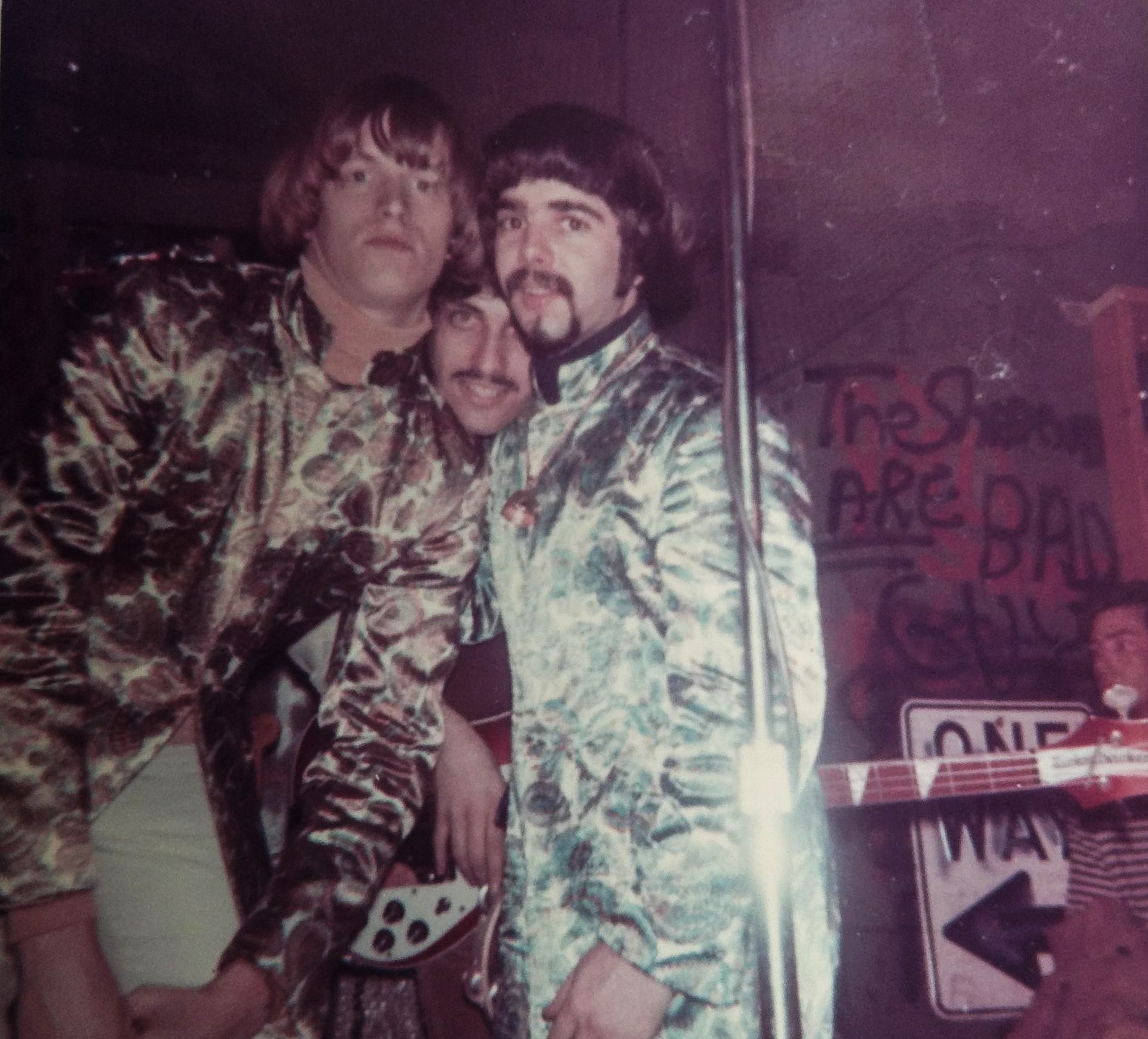
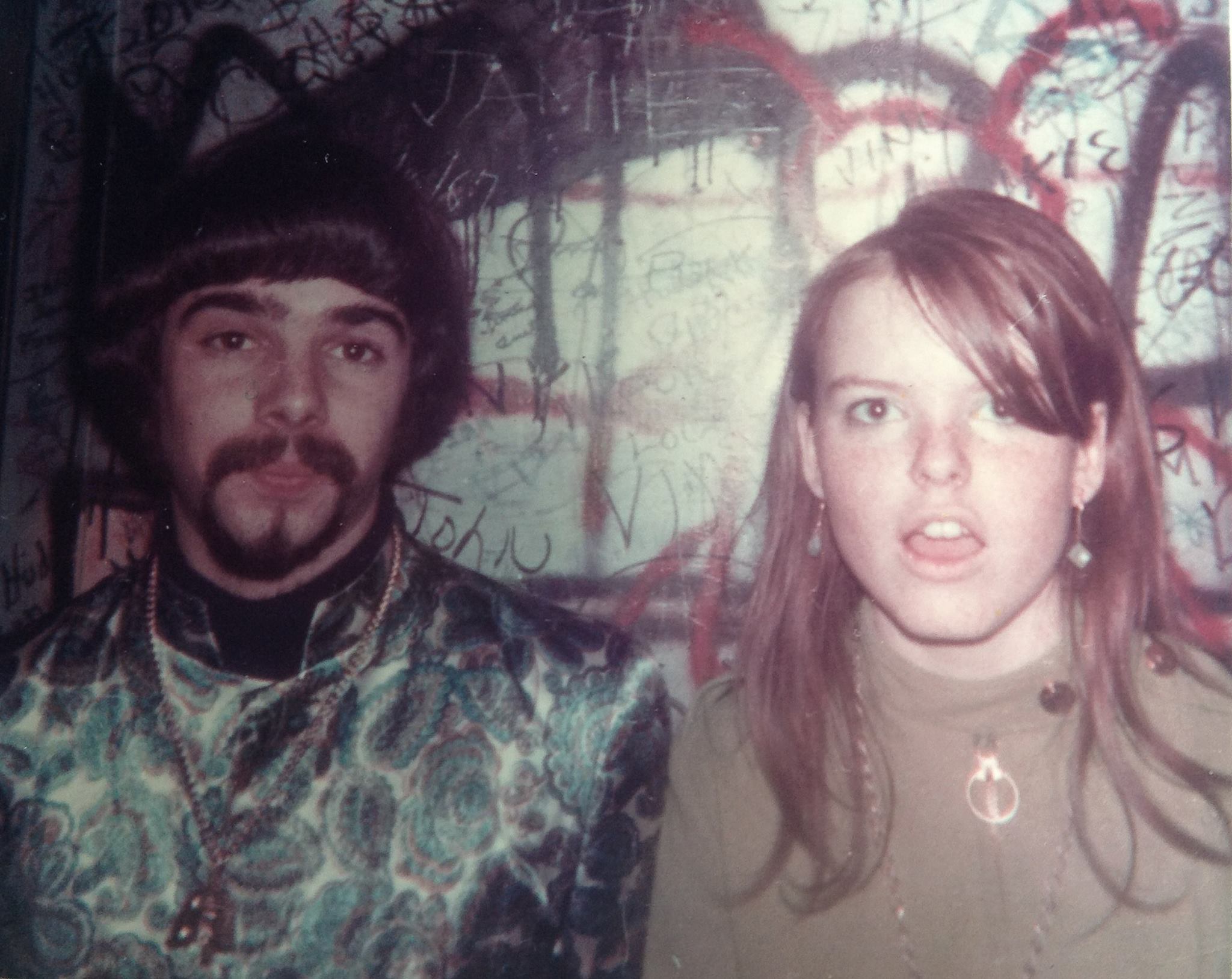
At the time Jerry Goodman was a roadie for the band? How did you get to know him first?
Jerry Goodman lived at the time in the Rogers Park area of Chicago where Fred Glickstein and Rick Canoff lived. I believe he became friends with Rick and started hanging around the band at that time. It’s true – he helped carry equipment. One day our other guitarist, Rick Mann, was ill and we were going to cancel the upcoming gig. Jerry said he knew all of our material and he would sit in with us. It turned out to be a great surprise! He was a very good guitar player and we thought about the possibilities of adding violin to the mix. Actually, Jerry was opposed initially until we asked him to bring his violin to a rehearsal. That was all we needed and the start to the new Flock!
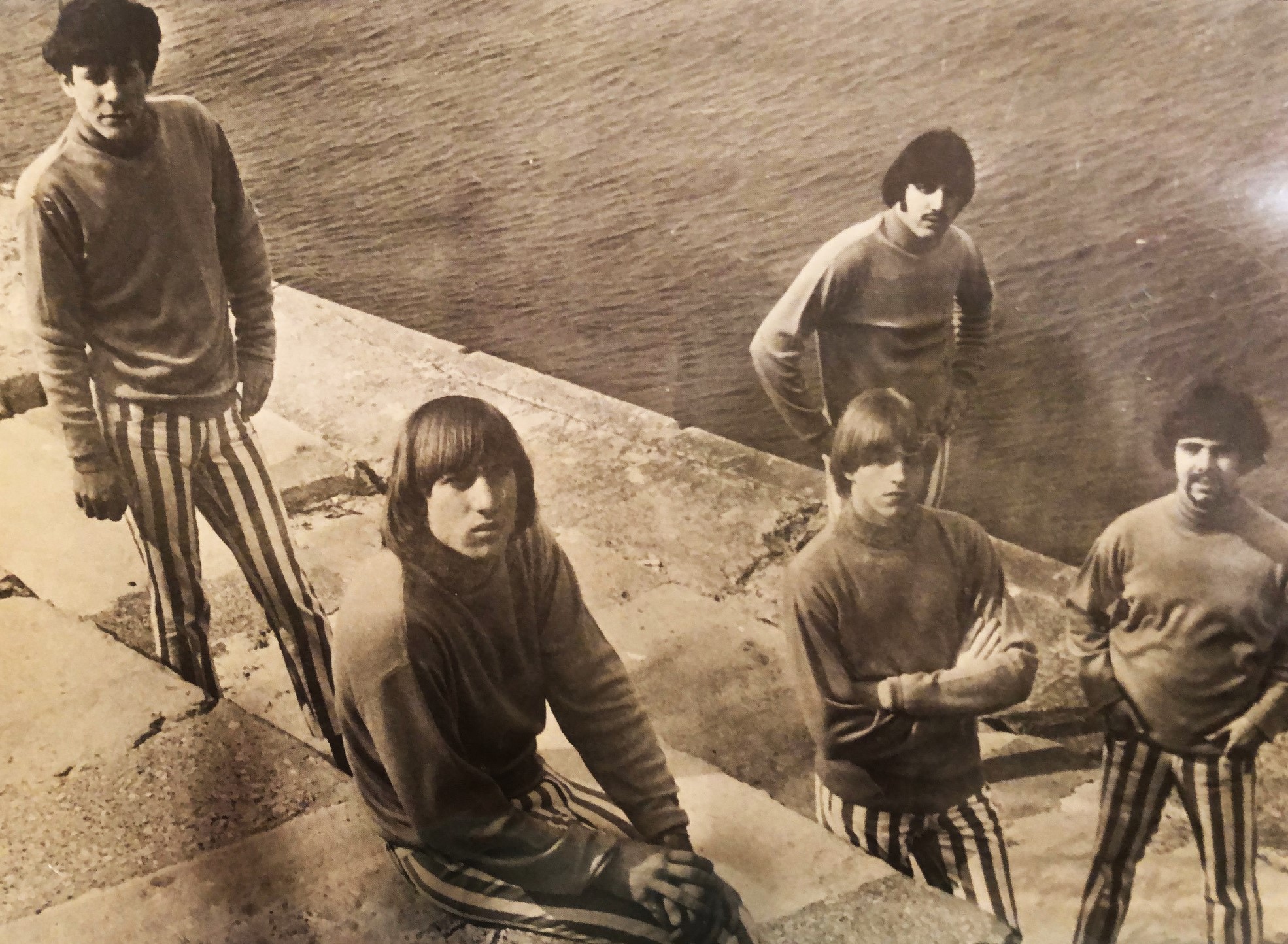
How did you get signed to Columbia and what were the circumstances surrounding your debut release?
Aaron Russo, who became our manager, owned a huge music venue in Chicago called The Kinetic Playground. You had Bill Graham with the Fillmore East and West on either side of the USA and Aaron right in the middle. Major acts would always play here crossing the country. Aaron allowed us to rehearse our new style of music at his club. We knew the manager who was Dick Rudolf. (Dick married Minnie Riperton and Maya Rudolf is his daughter). Aaron loved our approach to this new style of music and became our manager. He said that we should not play any more gigs until we had a complete set of material – 45 minutes – of original-type material and he would put on any show we wanted to debut the new Flock. We could have performed with The Who, Led Zeppelin, et cetera, but we chose a two-night show with John Mayall and Ritchie Havens. The crowd loved us. Standing ovations both nights! When Mayall returned to England, the press asked him what the music scene was like in America and he mentioned that he performed with this unheard of group – The Flock and we were the best band he heard at that time.
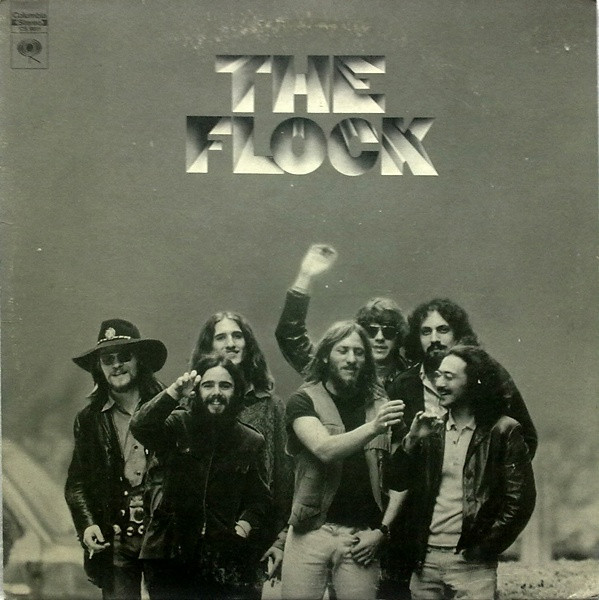
That got phone calls being made to Aaron from record companies and music magazines. Aaron set up a Showcase for us and we played our entire set to record executives who flew to Chicago from all over the world. Dick Asher, Columbia V.P., as well as Ahmet Ertegun, head of Atlantic Records were in attendance. They were the biggest record companies at the time and both companies wanted the band. Columbia won out with a large financial contract. We recorded ‘The Flock’ at the CBS studios in New York.
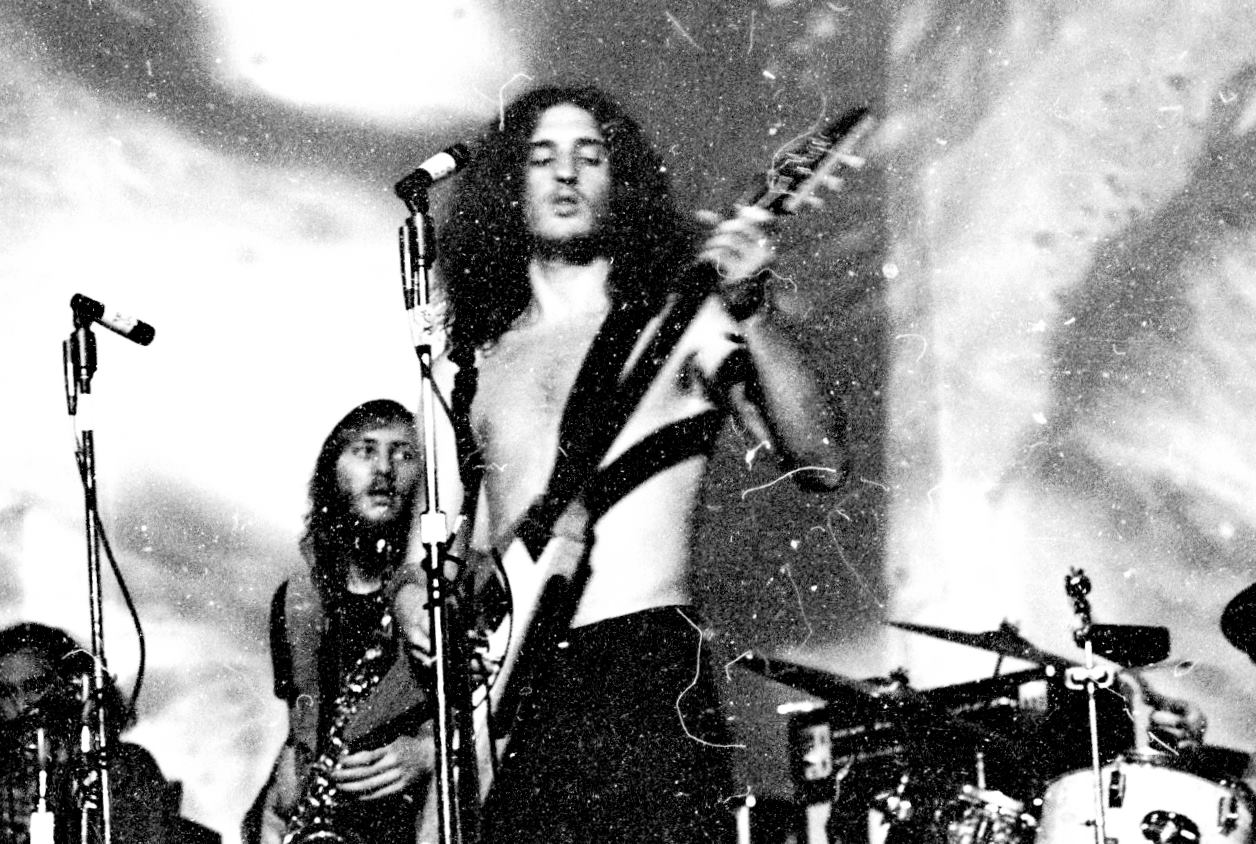
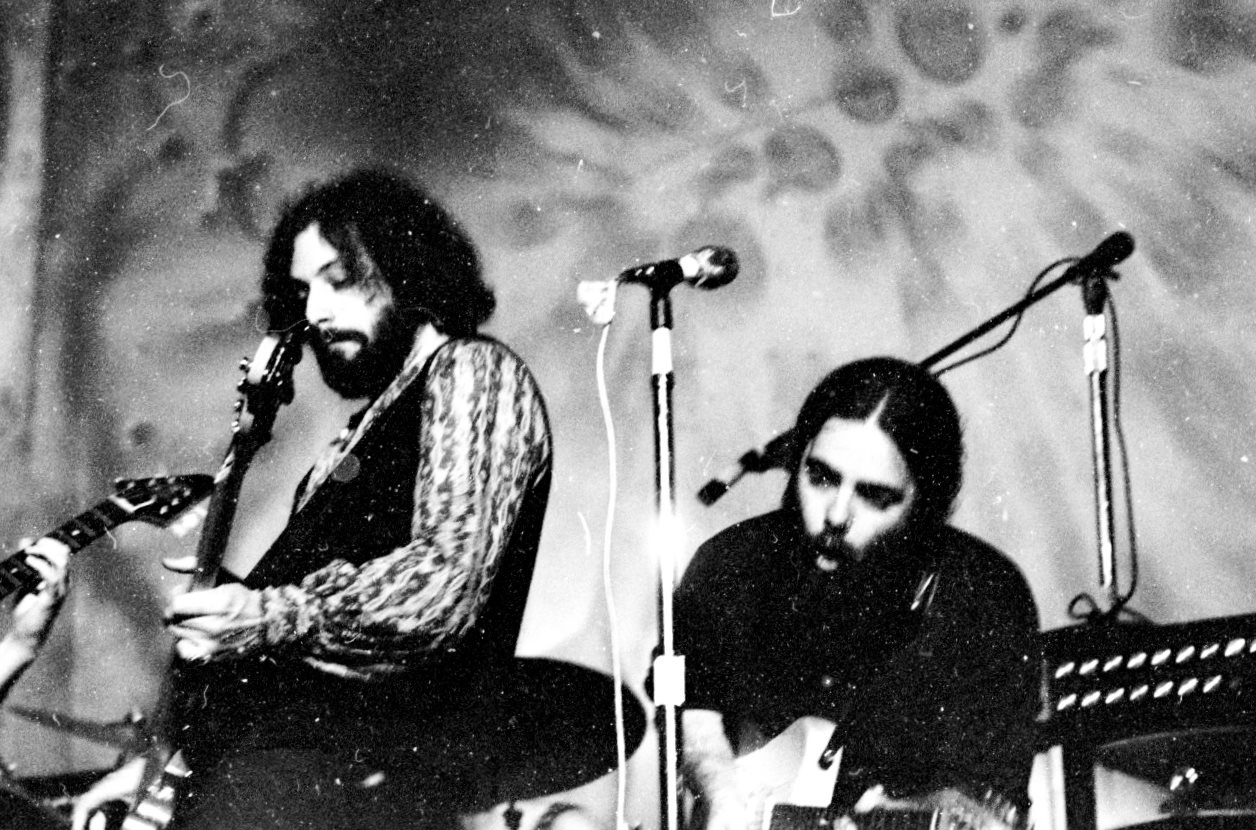
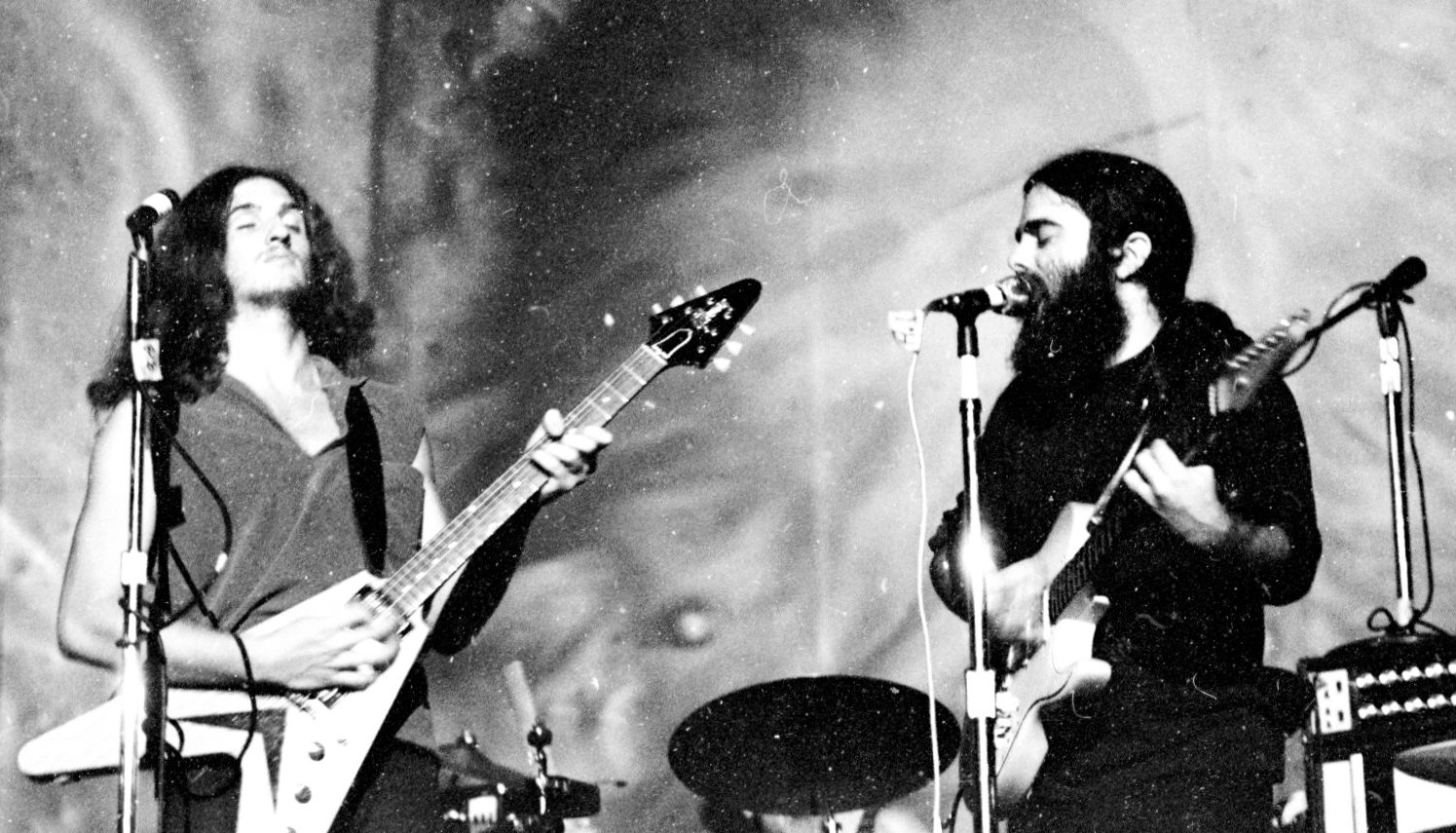
“Miles Davis got to hear some of what we were recording”
Your sound was very specific and was further into jazz fusion than either Chicago or Blood Sweat & Tears, influenced by Miles Davis’ ‘Bitches Brew’. Tom Webb was actually playing with Miles Davis on some of the material that wasn’t used ‘Bitches Brew’? What would you say was the main concept behind your debut album and where it was recorded?
Again, CBS studios on 52nd St. in Manhattan. Miles Davies got to hear some of what we were recording as he was in the studio at that time. We went to hear him record as well. Miles Davis was an influence, but I believe the “underground” music scene was starting to take shape with commercial-free FM radio stations playing album cuts, not just 3 minute pop tunes. The ideas for material started to flow through all of us and there were no limitations set. We simply expressed ourselves and we were all in with this approach. By the way, our entire first album was actually our 45 minute live set.
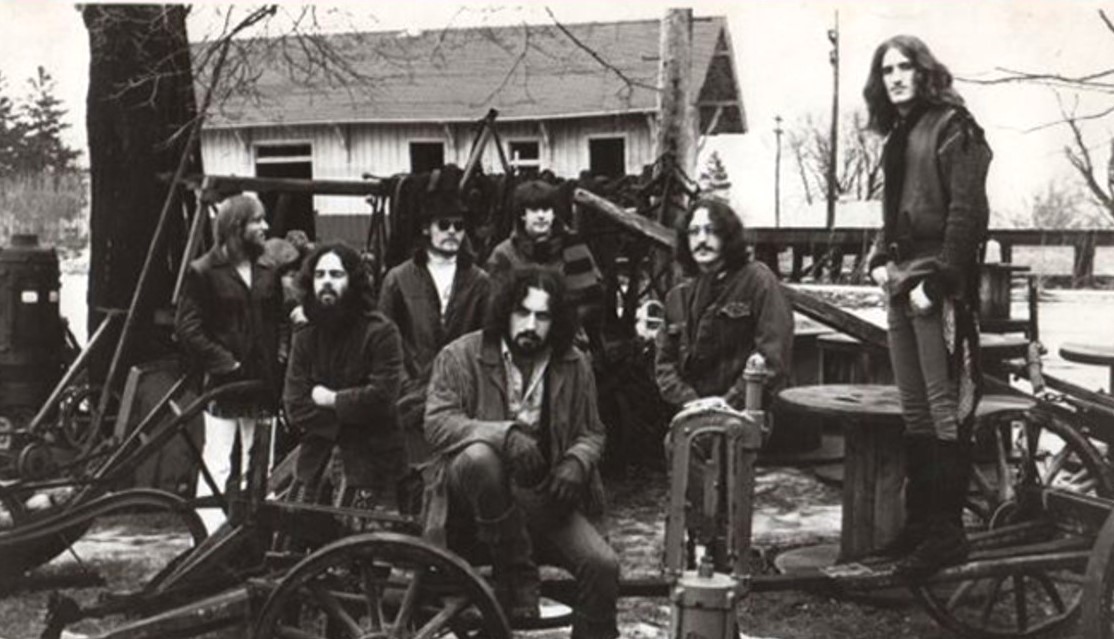
How did you approach songwriting within the band?
Fred would actually come up with initial ideas and Tom Webb would chart the horns. Rick Canoff wrote most of the lyrics with collaboration from all of us.
How did you get John Mayall to write liner notes for your debut album?
As I mentioned before, we performed a weekend with him and he loved what he had heard. John Mayall had a home in the Los Angeles area and he came to see us perform at the Whiskey a Go Go at Arron’s request. He was a great guy and we had several performances with him on the east coast of the States. If it wasn’t for John Mayall, who knows where we would have ended up? I can actually say that we were at the right place at the right time of the music industry.
What kind of venues did you play early on and how did that change after the release of your debut album? What are some bands you shared stages with?
There were a ton of teen clubs in the ’60s and ’70s. We played all over the Midwest at these types of venues and, yes, after the release of 0The Flock,0 we took off like wildfire. We played at most of the music festivals around the country and then a European tour was set immediately after the album release. We became a huge success in Europe performing at the Rotterdam Pop Festival in Holland around 1970 as well as the Bath Festival. We also toured several times overseas. We shared the stage with Jimi Hendrix, Jefferson Airplane, Pink Floyd, The Who, Santana, Joe Cocker, Canned Heat, Johnny Winter, and many other well-known bands.
What led to the decision that Jon Gerber replaced Tom Webb?
This was Tom’s decision alone. He did not want to travel any longer and we certainly missed him, but Jon Gerber was a great replacement.
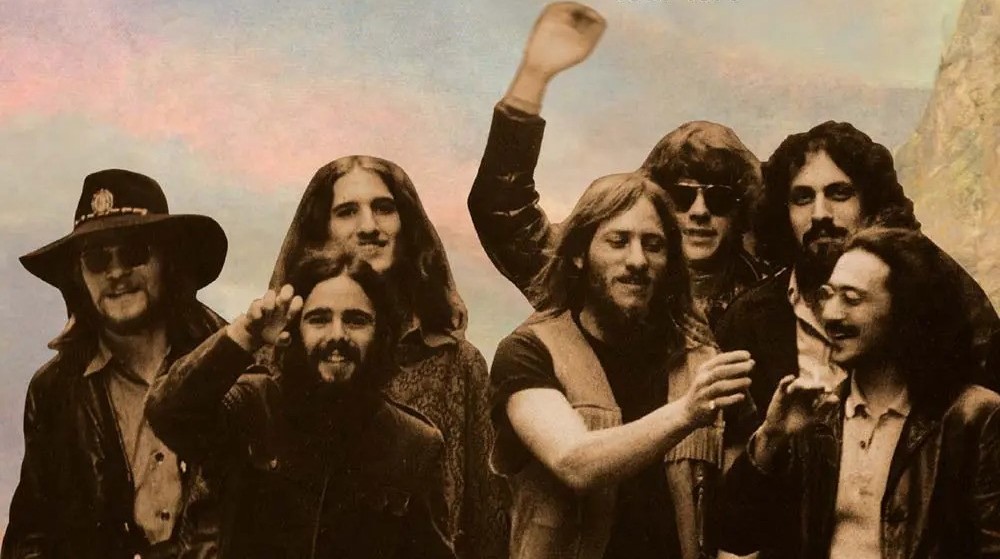
“We walked out into the middle of the pond and started to smoke some weed”
Would love to hear how you approach your second album, ‘Dinosaur Swamps’? Was there a concept behind it? Who did the cover artwork?
We started writing for our second album after we recorded the first Columbia record. As I remember, we were performing with The Who in the Boston area around 1969. We thought it would be great to take a week off and head to Cape Cod, a trendy resort area around Provincetown, Massachusetts and work on some new material. Before we left Boston, we took a drive to Walden Pond, made famous by the author Henry David Thoreau. It was the middle of winter and extremely cold. The pond was covered in ice and although you are not supposed to go in or near the water, we walked out into the middle of the pond and started to smoke some weed. It was a clear night and suddenly a vapor trail from a jet plane crossed over us and someone said they thought we were going back in time as the trail crossed over the pond. Here we were in the middle of nowhere on a frozen lake, smoking grass and coming up with some very strange ideas. We looked around and someone mentioned perhaps we are back in the prehistoric age and crossed back in time.
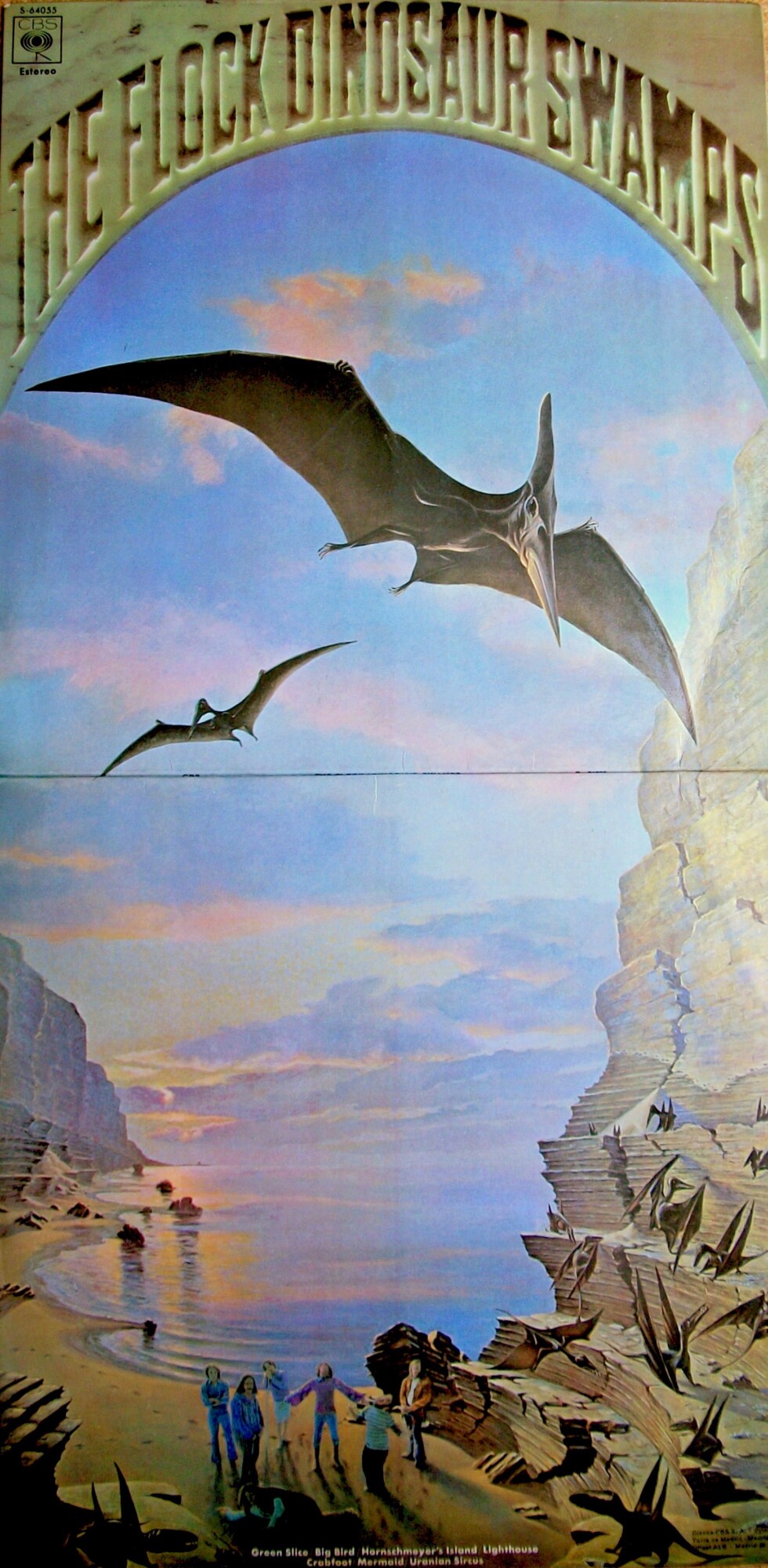
Someone else mentioned there could be dinosaurs around and that we were in a frozen swamp. Hence ‘Dinosaur Swamps’ was born. We started to write in Cape Cod and came up with songs related to our experience like ‘Lighthouse,’ ‘Mermaid,’ ‘Hornschmeyer’s Island,’ ‘Crabfoot,’ and ‘Big Bird’ – the Dinosaur we imagined. The album was essentially written on the beach that week. The artwork was from paintings that were in a museum in New York and we received permission to use them. Columbia artists created the balance of the cover including the photo of the group.
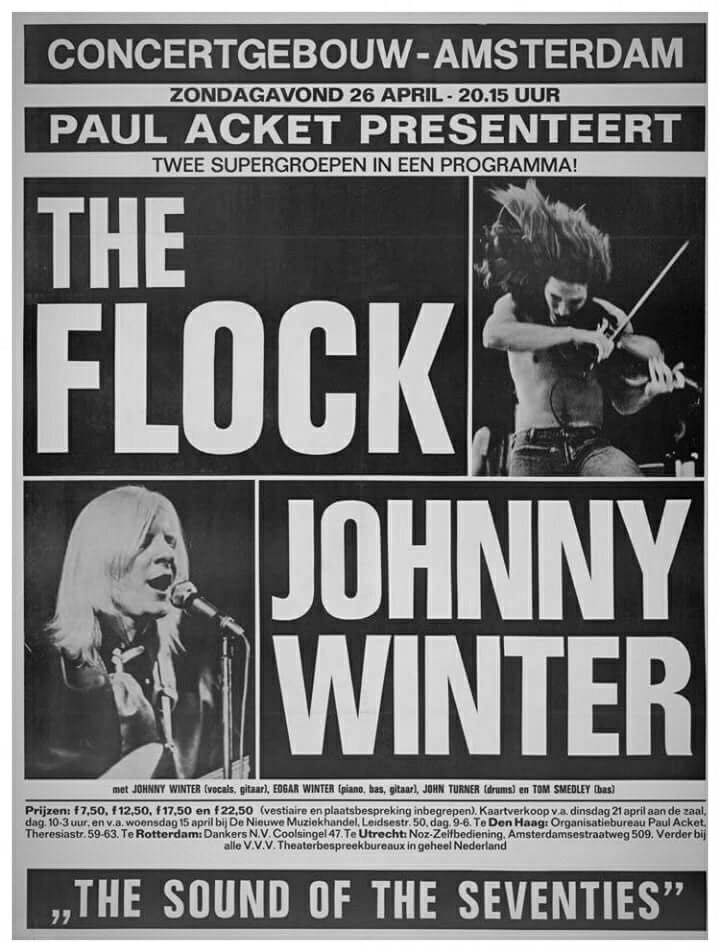
What kind of gear, amps et cetera did you have?
Back then, the bigger the better! We did not have sophisticated monitor systems and gear like we have presently. Acoustic amplifiers had endorsed the band and everyone had two amps on stage. Initially, I had two Acoustic 360 bass maps with 18″ speakers. Jerry Goodman, Fred Glickstein, and Tom Webb used 260’s. Later, I had one 360 with a Sunn head with two front-loaded 18″ speakers on either side of the stage. Today, I have a GK 800 watt Class D head that weighs under five pounds and 2 GK neo cabs- one with 2 – 12″ speakers and another with 1 – 12 in” speaker. My rig sounds great and becomes a monitor for me on stage with a DI going to the house system.
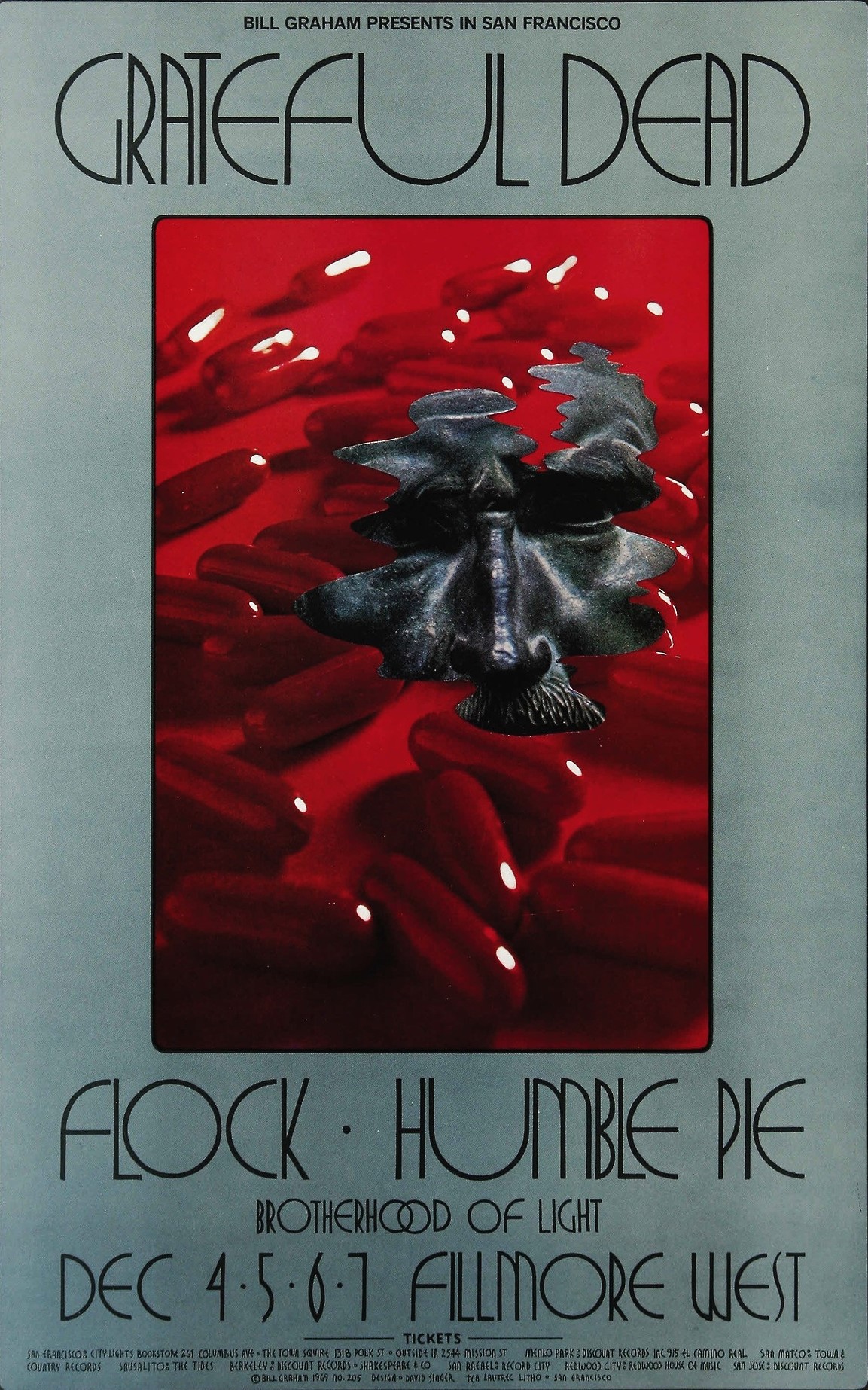
Can you discuss the circumstances surrounding your third studio album, provisionally titled ‘Flock Rock’?
Actually, this was released in 2008. We had some material that was recorded and not released. The third album was actually ‘Inside Out’ on Mercury released around 1975.
When did you decide to disband?
We had been together for five years constantly touring and I believe it just wore on us. New material was hard to come by and we went into CBS studios in Chicago to lay down some tracks, but we mostly jammed and it was not worthy of a Columbia production. We played through 1970. John McLaughlin had signed with Columbia right after we left and he was looking for a violinist like Jerry Goodman. He was available and, of course, the rest is history.
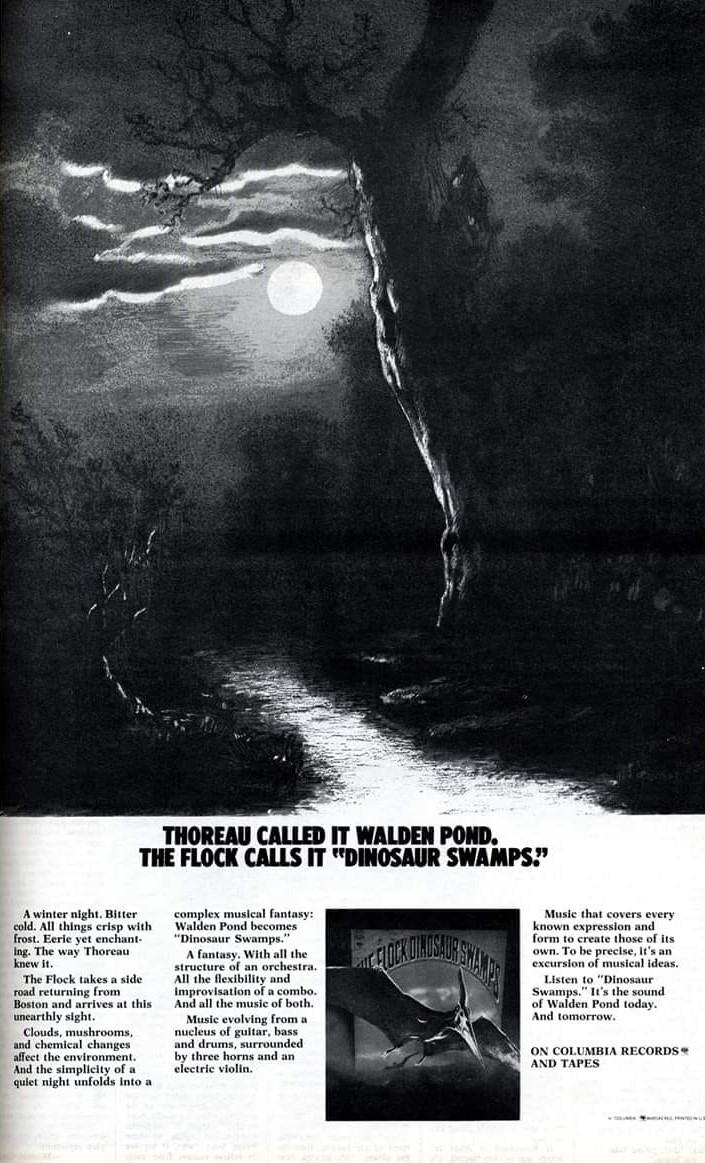
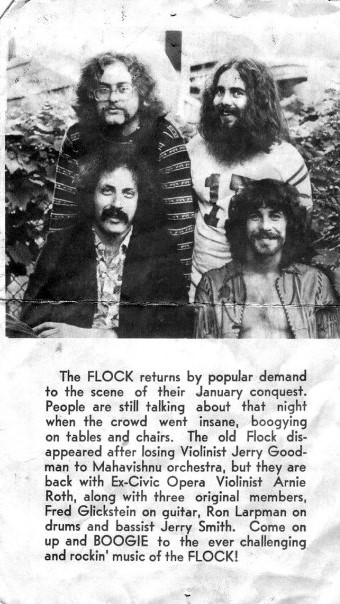
What led The Flock to reunite briefly in 1975 for an album, ‘Inside Out’? Would love to hear a few words about that.
In 1973, I had met Fred Glickstein and Ron Karpman on the streets in the neighborhood that we all resided in. We had heard that some European promoters were interested in bringing The Flock back for a lengthy tour.

We talked about and decided to put together a mini version of The Flock without horns. Mike Zydowsky toured with us on violin. Jim Hirsen, who was a monster keyboard player and vocalist, as well as song writer, joined up with us and Mercury signed us to the label. We had Felix Pappalardi (Cream’s producer and member of Mountain) produce the album.
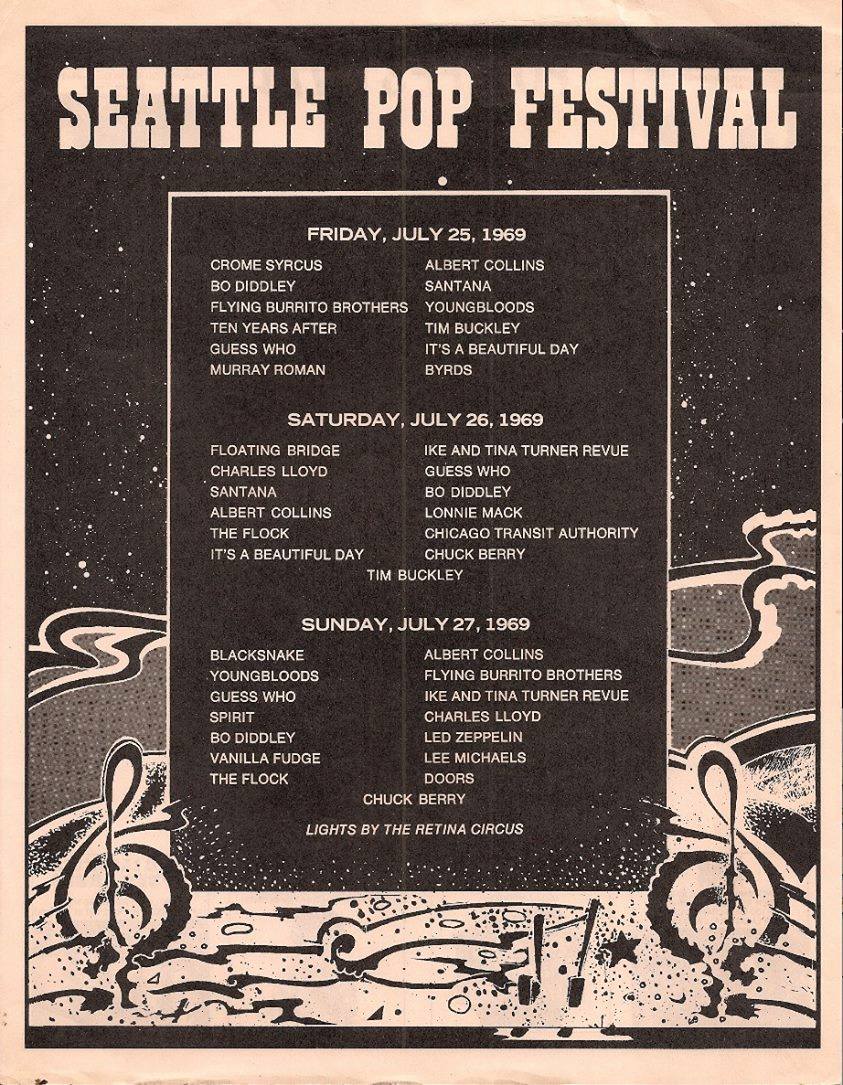
What would be the craziest gig The Flock ever played?
That would have to be two gigs. The first was the Rotterdam Pop Festival of 1970. There were 350,000 people in attendance. All very well-known artists of the day performed there. However, the craziest was probably the Bath Festival in England. We were going on just before Led Zeppelin and they wanted to perform during sunset. You can imagine that things just don’t necessarily go according to plan and as we were on stage, the sun was setting. Peter Grant, Led Zeppelin’s manager, pulled the plug on our gear during our set. Needless to say, he was a mean guy and an absolute JERK! You can read all about him on the internet. He even wrote about this incident in his book, Hammer of the Gods. Not cool.
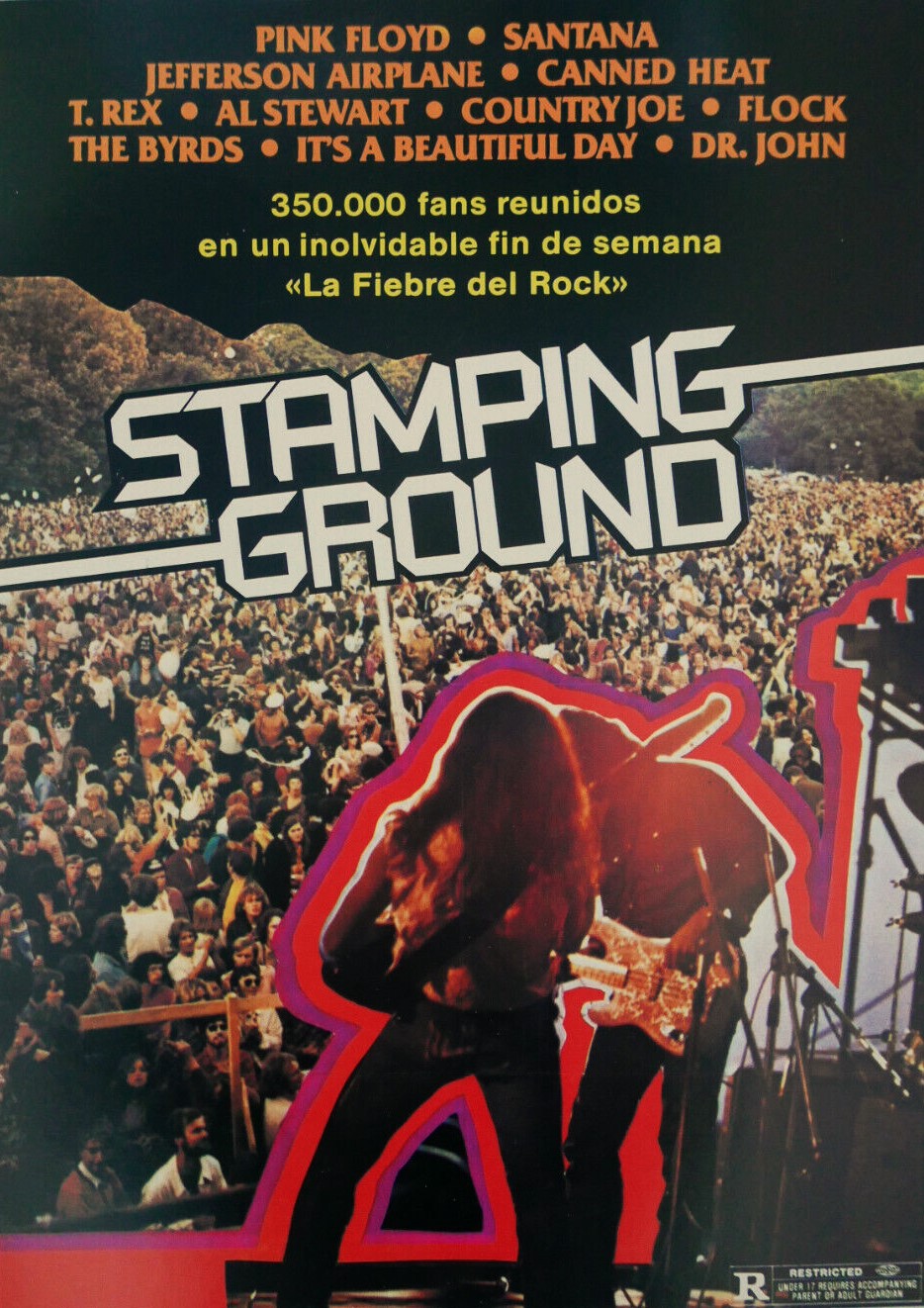
Did you experiment with psychedelics at the time? Would you say they change the perception when it comes to music making/listening?
Definitely smoked a lot of grass – like many did back then. This definitely changed our perception and helped us to understand one another as musicians.
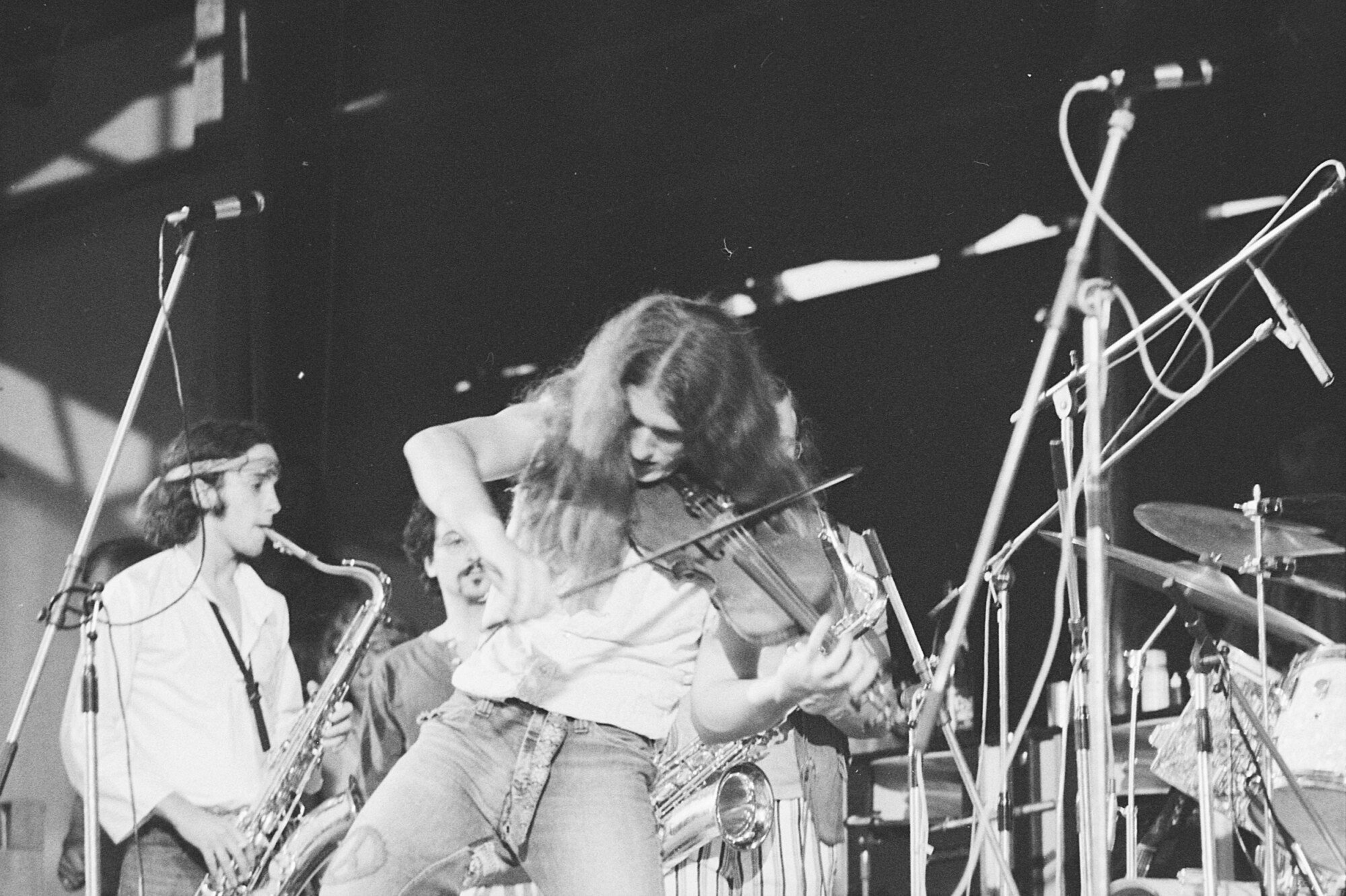
In 1971 you were also part of a band called Aura, that released an album for Mercury. Would love to hear about it.
All the popular bands in Chicago played the same circuit and we knew one another very well. For Days and a Night invited me to a show after The Flock broke up. This was a very powerful horn band with an incredible lead singer named Al Lathan. I joined the band and they were now called Giant City. Because of my connections with Mercury Records and knowing the A&R director, we signed to Mercury and changed the name to Aura. This was when I met my future wife as we went in to sign the contract. My manager told me to wait outside by the president’s office and then I met Mary Lou. We just celebrated our 50th wedding anniversary. I went on to reform The Flock and Aura disbanded.
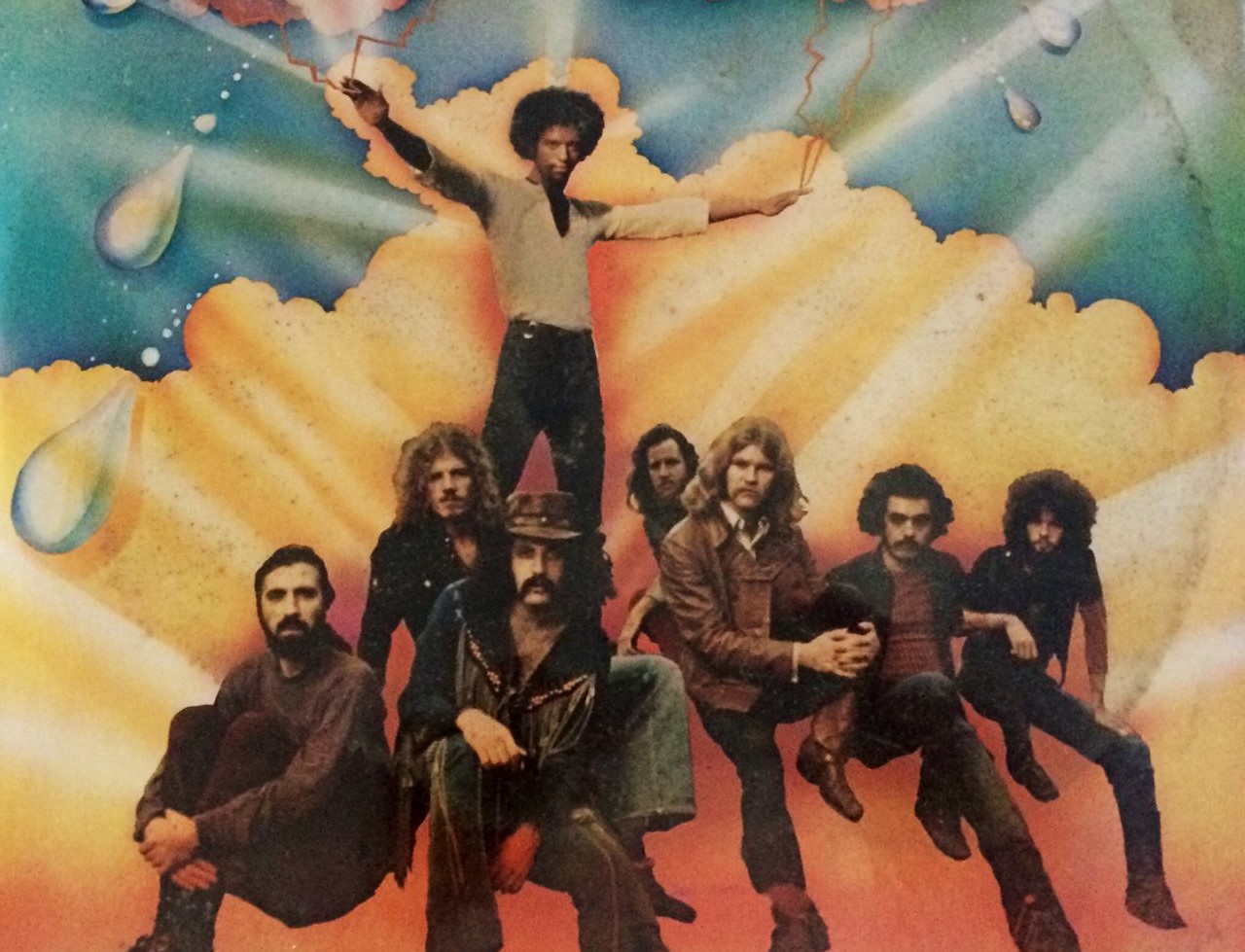
Did you also play as a session player for George Smith, K.O. Bossy, Bob Sargean? Tell us about those artists.
I was the record producer for K.O. Bossy. I knew Chuck Greenberg well. He was a great horn player and also recorded with us on the Aura album. K.O. Bossy was looking for a record producer and we recorded at Paragon Studios in Chicago in 1972. I don’t believe I had an affiliation with the other two artists.
Looking back, what was the highlight of your time in the band? Which songs are you most proud of? Where and when was your most memorable gig?
The highlight had to be our first European tour. We had never been out of the USA and here we were headlining shows across the continent. Being on stage and getting to know so many artists was a blast! ‘Clown’ was actually the first song we worked on with Jerry Goodman and I am still proud of that tune. It defined who we were. The most memorable gig would have to be The Rotterdam Festival.
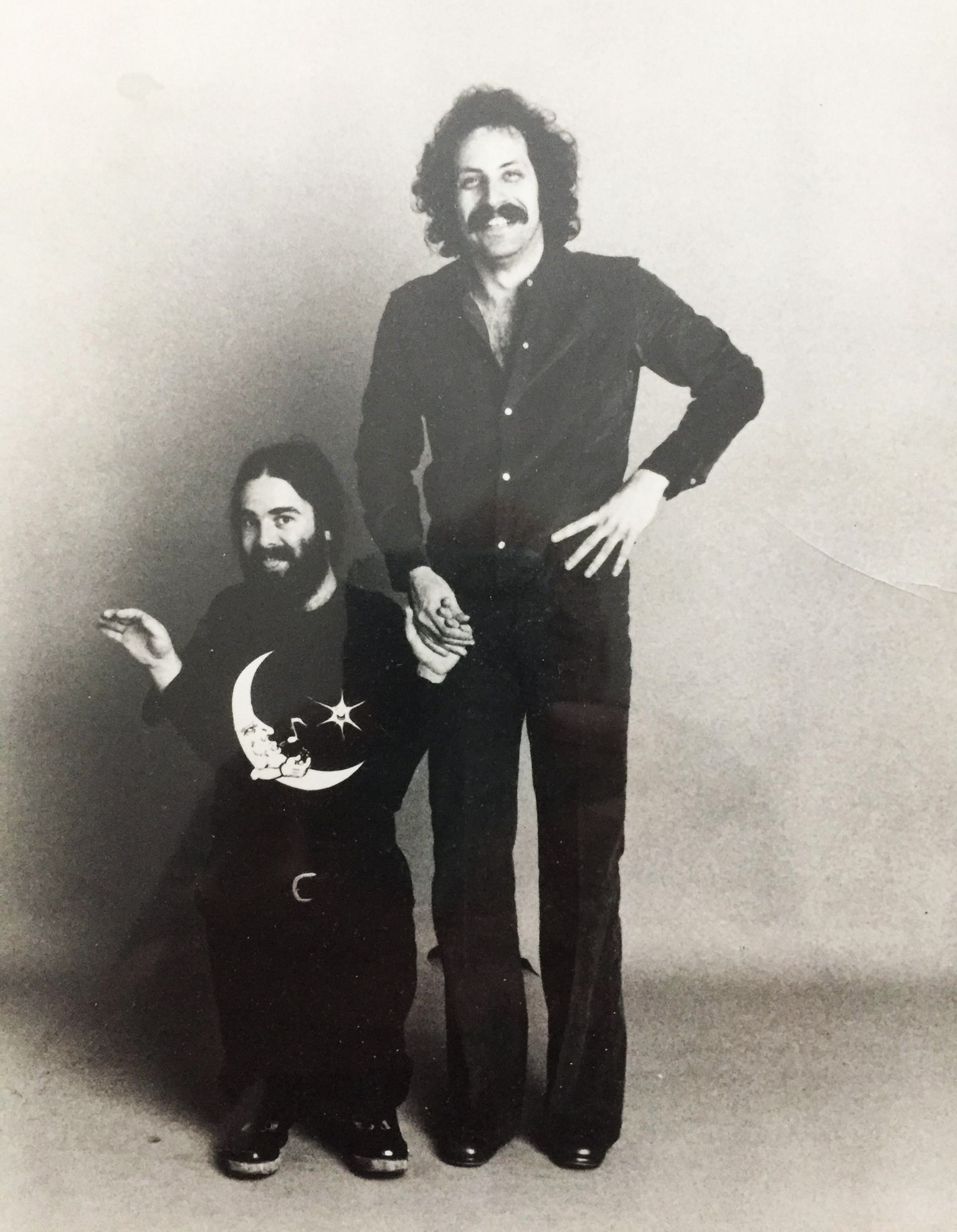
Is there any unreleased material by The Flock or related projects?
Yes, the tapes we made in 1970 are hiding somewhere in my home. It’s been about 30 years since I last listened. Tape decks are a thing of the past and I guess I should invest in one.
What are some of the most important players that influenced your own style and what in particular did they employ in their playing that you liked?
Jaco Pastororius without a doubt is my favorite player. He is like God to me. I love Joe Dart today as well. Jack Bruce was an influence and even Paul McCartney to a large extent. Jack Cassidy from Jefferson Airplane was also an influence as he was very melodic in his approach to the instrument.
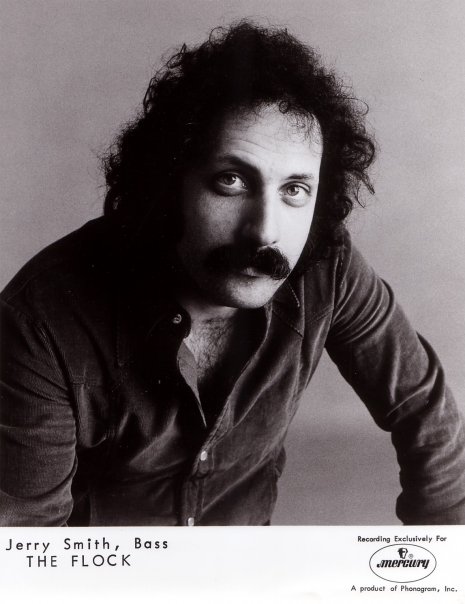
Are you still playing these days? What currently occupies your life?
I am playing today and it seems what goes arounds – comes around. I am currently in a band in Chicago called Dinosaur Exhibit. And, yes, even Jerry Goodman is playing with us! Also, Howard Levy on harmonica from Bela Fleck and The Flecktones. He is a 2-time Grammy Award winner. In fact, just last week, we performed at a memorial concert for Fred Glickstein who passed away a few months ago. Fred was a major contributor to the entire music scene and many well known Chicago players attended. I recently retired as Director of North American Sales for the Zildjian cymbal company. I have been in the wholesale and manufacturing side of the music business since 1975.
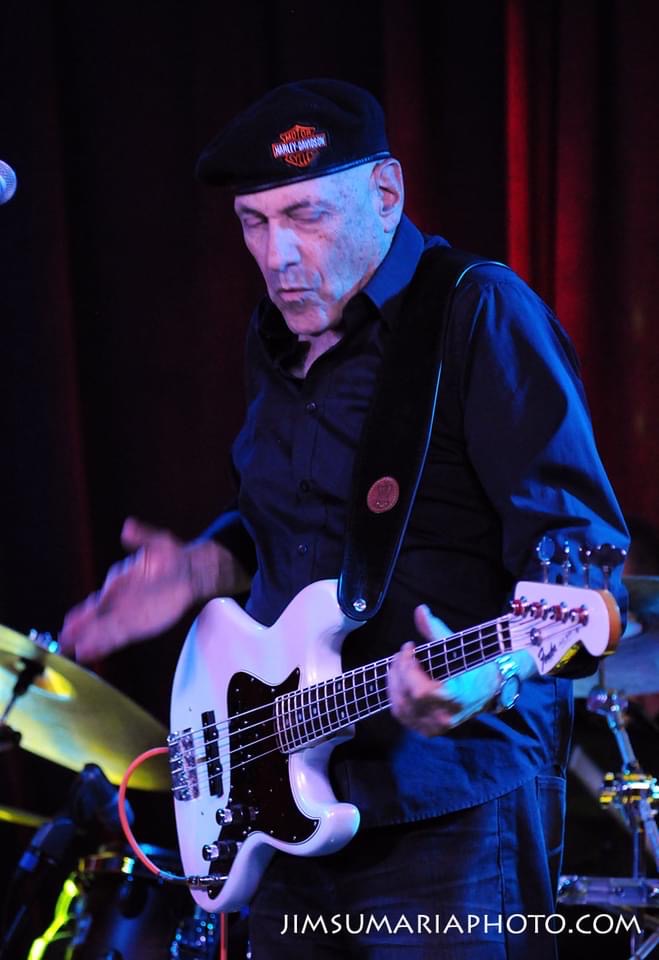
Thank you for taking your time. Last word is yours.
Thanks for allowing me to share my story. When I look back on my life, this only reminds me of how fortunate I am. I can honestly say that we were in the right place – right time to make a successful stab in the industry. And playing music just led me toward the business side where I had a successful career.
Klemen Breznikar
Headline photo: The Flock at Kralingen (1970) | Credit: Fotoburo De Boer
All photo materials are copyrighted by their respective copyright owners, and are subject to use for INFORMATIONAL PURPOSES ONLY!
The Flock | Interview | Frank Posa

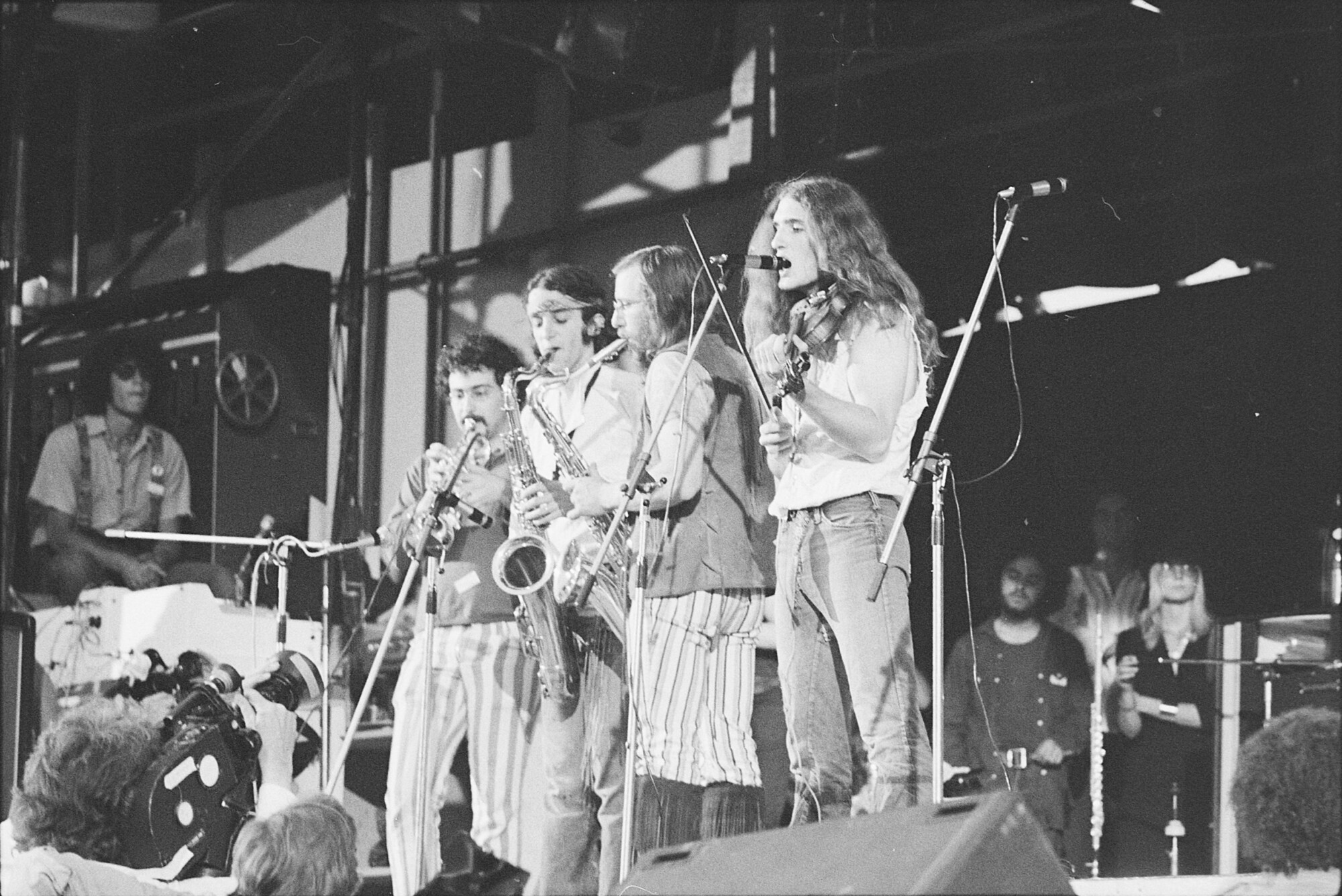



Thanks for this wonderful interview. The Flock has always been my favorite Chicago band from that golden age. I have spun their music from time to time on my radio show. Jerry is a great storyteller. Would love to hear those 70s basement tapes he mentioned.
Love it! Thanks Jerry! And – by the way – I have converted some of those tapes to disc.
I have been a devoted fan of The Flock from the very beginning. I own every 45 on Destination and USA Records, every LP on Columbia and Mercury, plus a compilation LP called Early Chicago Volume 2 which had Magical Wings (without the backwards ending that existed on the 45, unfortunately). I own every CD including The Best of the Flock, and Bob Stroud’s compilation that had Take Me Back. I also have a VHS copy of Stamping Ground. I saw them perform at the Dolnick Center on California and Granville when they still had Rick Mann, and I remember Rick Canoff (RIP) doing a killer rendition of Harlem Nocturne. I also remember him playing 2 saxophones at once, which was one of the signature highlights of their performances at the time. I also saw them open for the Byrds at the Aragon Ballroom circa 1969, when Jerry Goodman joined the band and played violin and guitar. My family owned a hot dog joint in Rogers Park where they were from, and I remember Rick Canoff coming in and playing Flock records on the juke box (including Tired of Waiting b/w Store Bought, Store Thought, the short version, on the Columbia label).They should have been a much bigger band in the US then they were, glad they at least got recognition all over Europe. So sorry to hear that Fred Glickstein passed away, RIP Fred.